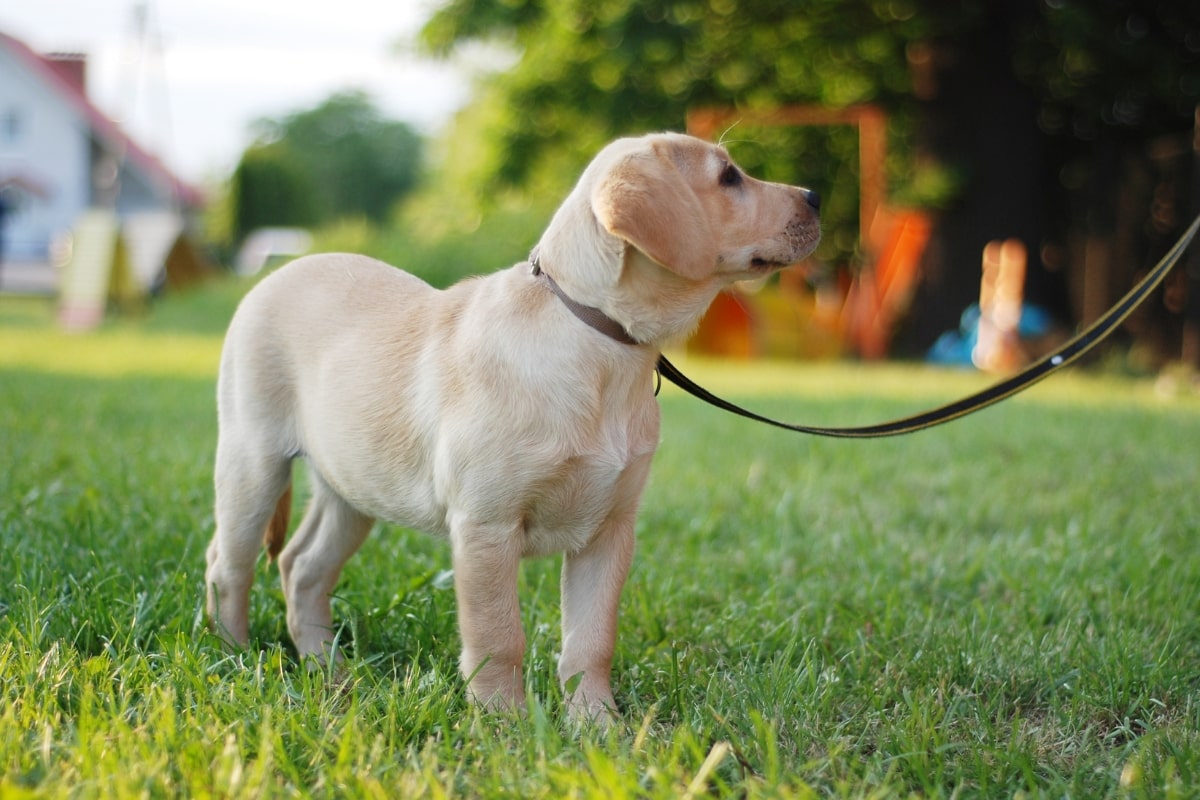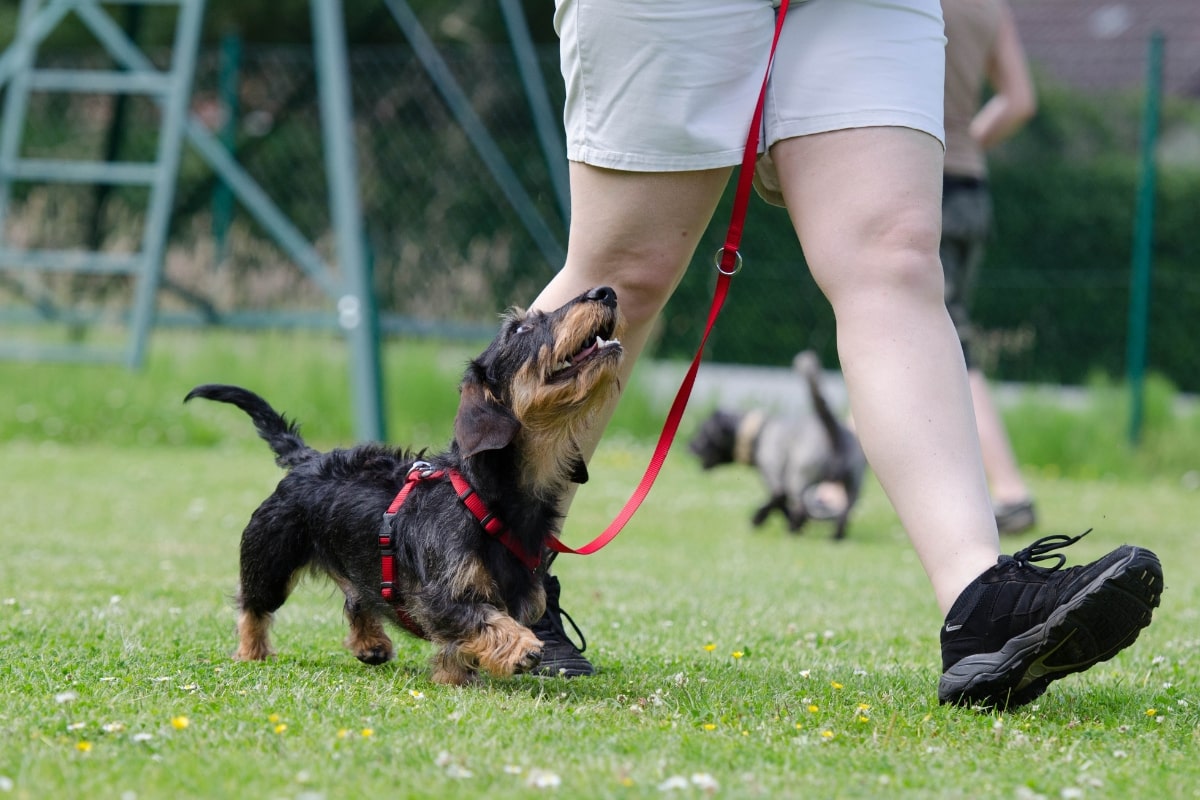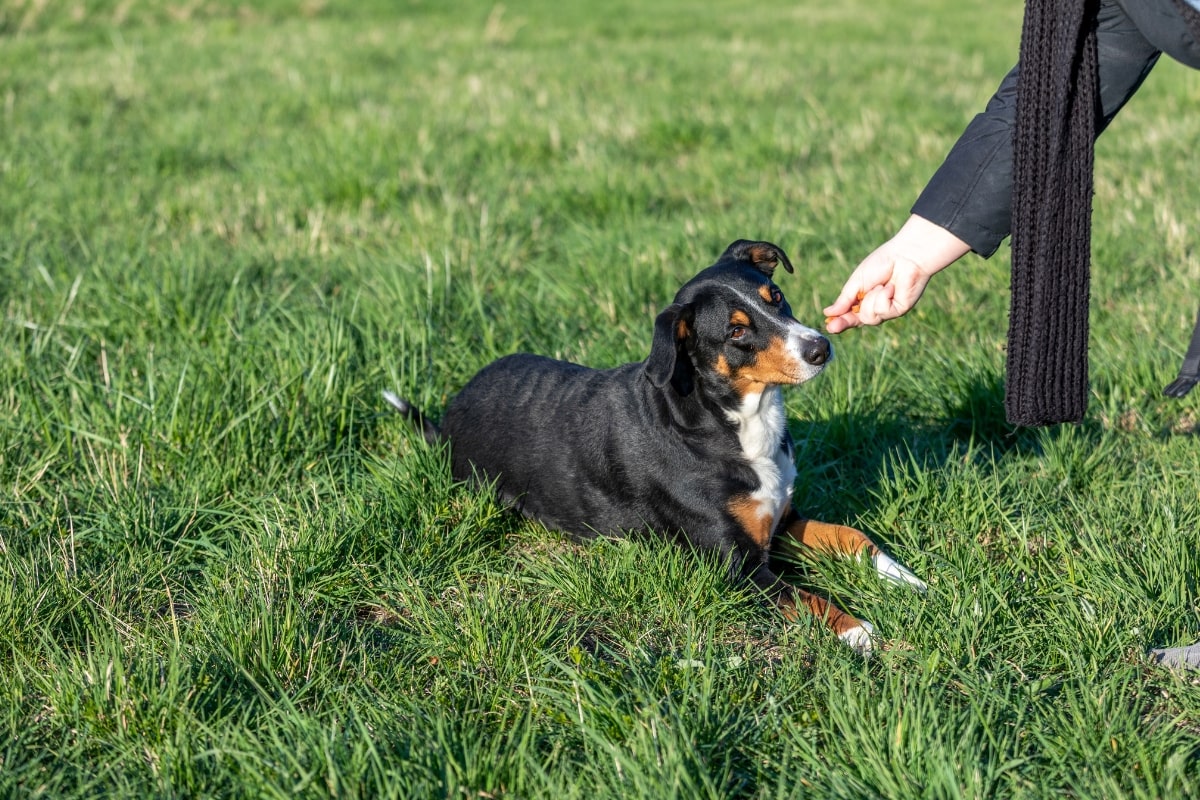
Training your dog is one of the most essential things you can do as a dog owner. But where to start? We’ve listed our top five basic commands that every good boy or girl should know. These commands aren’t just tricks to show off at the dog park – they’re essential for keeping your pup safe, happy, and well-behaved. So grab a handful of treats and get ready to unleash your dog’s full potential!
Why is Dog Training so important?
Why is dog training so doggone important? For starters, training improves the bond between you and your pup. It also promotes good behaviour, combats behaviour problems and reduces the likelihood of your dog getting themselves into a predicament when you’re out and about.
5 basic commands
Do you have a puppy at home or are you just starting out with basic dog training? We can highly recommend starting with these 5 basic commands.
Sit
First up, the quintessential “sit” command. Not only is it super easy to teach, but it’s also incredibly useful. It’s a great way to let them pause and concentrate on you, whether you’re out for a walk or giving them their food. Lure them with a treat, holding it higher than their nose so they look up and their bottom automatically finds the floor. Then, mark the behaviour when they sit down by saying “sit” and reward them with their fave treat. They’ll be striking a pose like a pro in no time.
Stay
Next, we have the “stay” command – the ultimate multitasking command. Whether you’re juggling groceries or playing fetch, the “stay” command keeps your dog in one spot and out of trouble. Start by having them sit, put your hand up like a traffic controller, and say “stay”. Take one step back and call them. Reward your pooch if they didn’t move before you called them. Gradually increase the distance and duration, and soon you’ll have a pup who can stay like a boss.
Leave
Thirdly, we have the “leave” command. Teach your dog to leave anything from a kid’s toy to a toxic food scrap, and you’ll be able to breathe easy knowing they won’t be harmed. There are two ways to practice this command. If they have a toy in their mouth say “leave” and hold your hand under their mouth. Reward them when they let go. Another good exercise is getting them to resist temptation by placing a treat next to them on the floor. Get them to sit, say “leave” and wait a couple of seconds. Then reward them with a release command such as ‘OK’ and let them have the treat. Repeat a few times until your pooch understands what to do.
Both of these exercises can be a lifesaver if your dog has something in their mouth that can be harmful to them, or if they’ve found something on the ground that they shouldn’t get their paws on.

Watch me
Next, we have the “watch me” command – the focus command. Use this command to redirect your pup’s attention when they’re too distracted or too excited. Hold a treat close to your face and say “watch me”. When they make eye contact, mark the behaviour and reward them with the treat. Before you know it, they’ll be giving you puppy eyes all day long!
Come
Last but not least, the “come” command – the ultimate recall command. Whether your pup is chasing a seagull at the beach or just wandering too far away, calling them back with the “come” command can keep them safe and sound. Start by calling their name and saying “come”. Reward them with a treat when they return, and gradually increase the distance and distractions. The best way to get started, is by practicing this in your backyard, or by using a long lead.
Bonus trick: High five!
Teaching a dog to high five, or shake, is not only incredibly cute to look at, it can also be highly beneficial for overexcited, reactive and anxious dogs. It’s the perfect ice breaker when meeting new people and a great way for them to sit and calm their nerves. The best way to teach this is to hide a treat in the palm of your hand. Get your dog to sit, then let them sniff your hand. Once they use their paw to try and open up your hand, mark it with the command of your choosing – ‘High five’, ‘Paw’ or ‘Shake’ are some fan favourites – and reward them with the hidden treat.

Dog Training Tips
Is dog training getting you frustrated? Or do you feel like you’re getting nowhere with your pooch? Maybe these tips can help you out:
- Be patient: your dog might do great one day and act like they’ve forgotten everything they’ve learned the next day. It’s perfectly normal to go three steps forward and one step back when you’re training your dog. As long as you use clear and concise words to mark those good behaviours, and you are consistent and frequent with training, you will get there!
- Commands on repeat: dogs need repetition to understand what you want from them. Especially when learning a new trick, practise multiple times a day and keep repeating the same commands over and over again. Even if your dog gets it straight away, repetition will help make it stick.
- Start small: if you expect your dog to have perfect recall from day one, you’re setting both of you up for failure. Starting with a small step can yield bigger results than expecting your pooch to come to you when they’re ten metres away. Start small and train somewhere without distractions – like your backyard. Then scale up once you and your dog are comfortable and confident.
- Positive reinforcement: dogs are people pleasers and most of them are food motivated. Encourage their willingness to learn and do the right thing by making training fun and using positive reinforcement. Reward good behaviour with a treat and give them plenty of praise and pats when they’re doing a great job.
- Don’t forget to release: as important as it is to teach your dog behaviours by marking certain words, it’s just as important to teach them a release command. For instance, say ‘OK’ or clap your hands after they have completed the skill you’re trying to teach them. This helps them understand when they are in full focus, training mode and when they are allowed to relax.
- Call in help if you need it: do you feel like you’re getting nowhere? Reach out to a Dog Trainer who can assist you with training your dog. Our Dog Trainer has dealt with all different types of behaviours and dogs and will definitely be able to get you on the right track.
